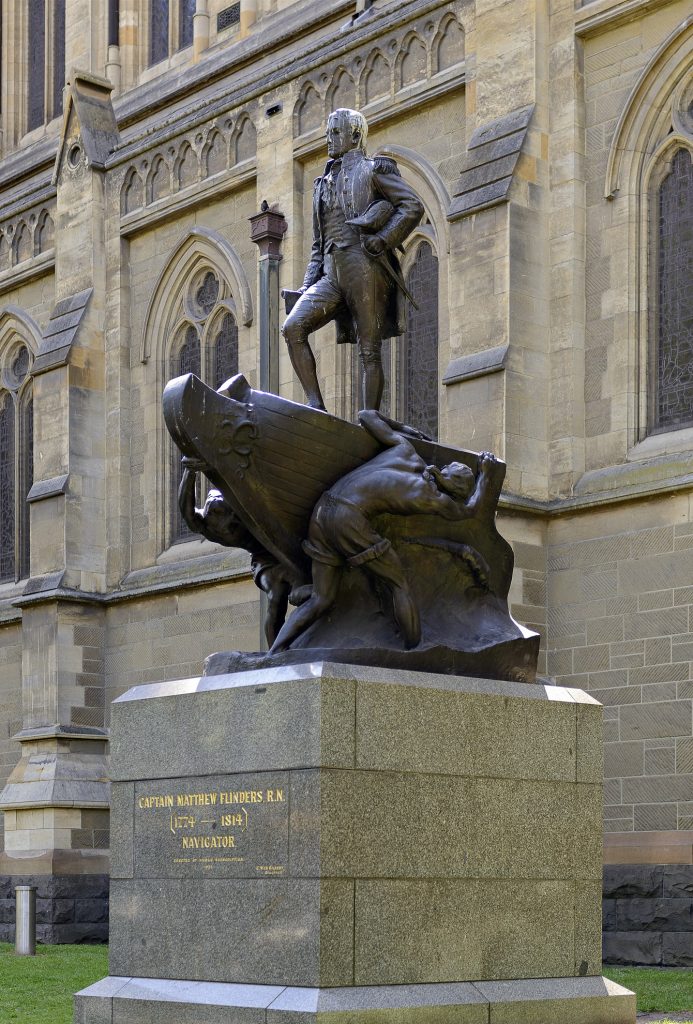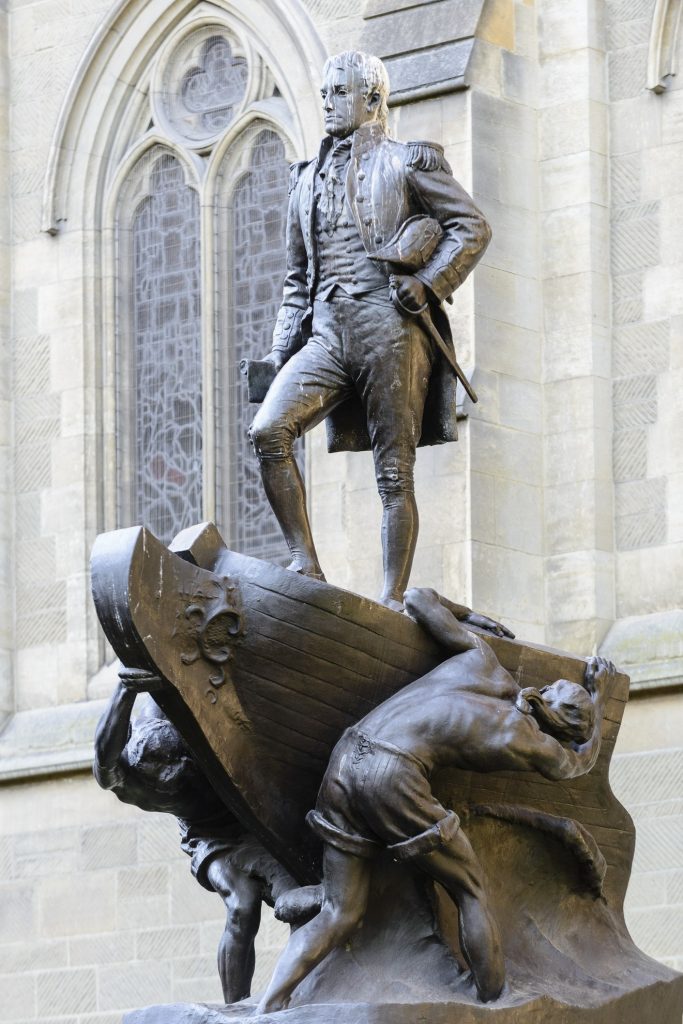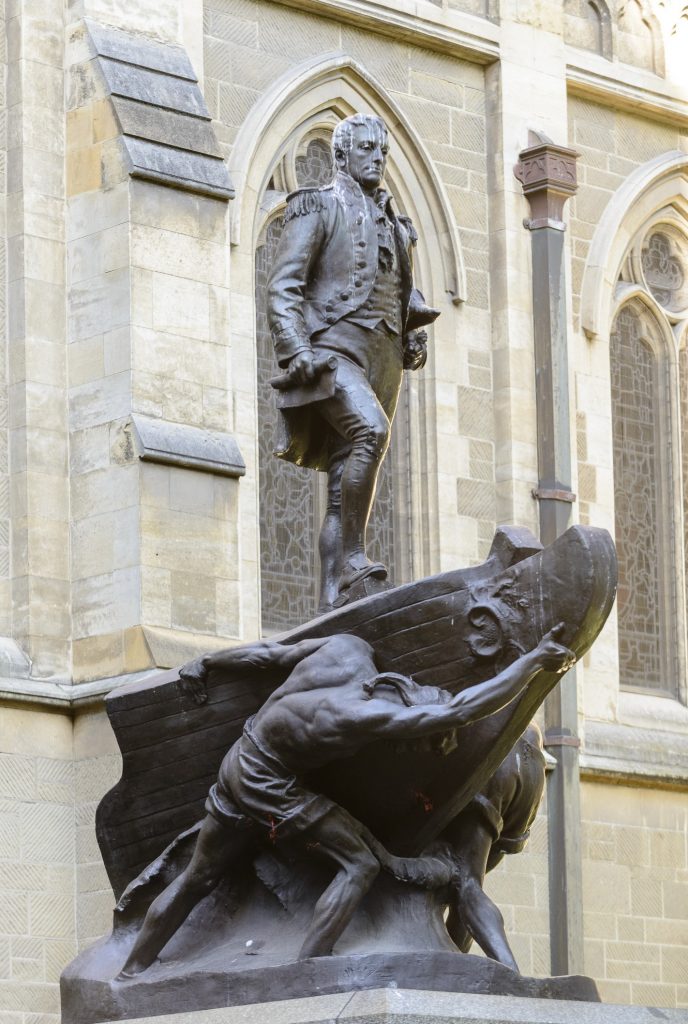Captain Matthew Flinders Statue 1925
GILBERT, Charles Web; BARBEDIENNE, F
Registration number
1086583
Artist/maker
GILBERT, Charles Web; BARBEDIENNE, F
Title
Captain Matthew Flinders Statue
Production date
1925
Medium
bronze, granite
Dimensions (H x W x D)
596 cm (overall height). 359 cm (sculpture); 237 cm (base)
Inscriptions
"Web Gilbert Sculptor 1923 Melbourne F.Barbedienne Founder Paris" / CAPTAIN MATTHEW FLINDERS, R.N. / (1774 - 1814) / ERECTED BY PUBLIC SUBSCRIPTION 1925 / C. WEB GILBERT SCULPTOR / CAPTAIN MATTHEW FLINDERS 1923 – 1925 / CHARLES WEB GILBERT 1887 - 1925
Credit line
Erected by public subscription, 1925
City of Melbourne Art and Heritage Collection
Keywords
Summary
Location: St Paul’s Cathedral, Swanston St
A bronze figure of Matthew Flinders in his Commander's uniform, standing on the prow of a boat, braced against the wind, brought ashore by two seamen. The bronze sculpture sits on a granite plinth. Unveiled 8 November 1925.
The idea for a monument to Matthew Flinders was first discussed in1911 after a meeting of the Royal Geographical Society of Melbourne. In 1915 a public subscriptions began, however with the coming of war the plans were put on hold. In 1922 the notion was resurrected, this time by the Melbourne City Council, and C. Web Gilbert was elected to create the piece. In subsequent months there was much factional fighting and public debate about the location and the form of the sculpture. There was heavy competition for the statue to be placed at the St Kilda foreshore, but a Council meeting decided in 1923 that it "must be located within the city of Melbourne." Finally in 1924 a design was approved and permission was granted by St Paul's Cathedral to house the statue on their grounds. The bronze statue itself was cast in Paris by Barbedienne, and sadly Gilbert died just days before it returned to Melbourne. It was unveiled by the Governor, Lord Stradbroke on November 7 1925, in the presence of more than 3000 people.
Flinders gained acclaim for establishing the strait between mainland Australia and Tasmania in 1798. Over 1801–03, he mapped the coast of Australia, completed against great odds, and was the first cartographer to use ‘Australia’ on maps, rather than ‘New Holland’. On the Flinders’ Statue Fund collecting card, Professor Ernest Scott wrote: ‘amongst the seamen who habitually traverse these coasts, no name, not even that of Cook, is so deeply esteemed as his’.
Charles Web Gilbert was born in 1867 near Cockatoo, in Victoria. At a young age he became a pastry cook, modelling cake decorations. He later studied at the National Gallery Art School, but had no formal training in sculpture. Gilbert travelled to England at the outbreak of World War One, and shortly after to France, where he made battlefield models for the Australian Imperial Force. Returning to Australia, he worked for the Australian War Memorial, and later undertook many commemorative commissions. The Flinders monument is Gilbert’s best known work and has been particularly admired for the use of the boat as the statue’s base.



